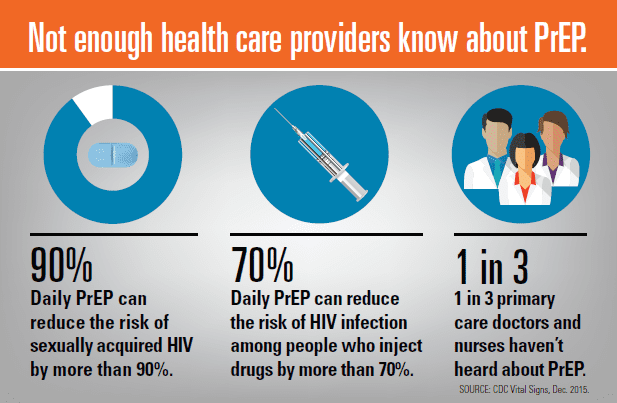In 2010, the National HIV/AIDS Strategy outlined a comprehensive plan to combat the HIV/AIDS epidemic. One of the tools included to halt the spread of the virus to uninfected persons was pre-exposure prophylaxis, known commonly as PrEP. PrEP is a once-a-day regimen, currently consisting of the drug Truvada, to help HIV-negative adults at substantial risk of acquiring HIV to prevent infection.

To make the national strategy actionable, the U.S. Centers for Disease Control and Prevention (CDC) released clinical guidelines in 2014 that provide support for integrating PrEP into high-quality care settings. When these guidelines were first introduced, primary care physicians were relatively unaware of how to incorporate PrEP into their practice as most HIV care was, and still is, provided by specialists.
Primary care providers are, however, the front line of care for patients at risk of contracting HIV, and therefore must be able and willing to identify those who would benefit from PrEP. The traditional 15 minute office visit and the current fee-for-service reimbursement structure are not designed for the in-depth discussion necessary to identify those at highest risk and to determine if a particular person is a good candidate for PrEP.
With the support of a grant from the CDC, the Primary Care Development Corporation now helps providers increase their HIV prevention capacity and translate these guidelines into practice. PCDC’s trainers have developed training and materials designed to help primary care practitioners overcome barriers to HIV testing and screening, such as time restrictions and general stigma, understand which patients would benefit most from PrEP, and learn best practices to engage patients in prevention. PCDC provides hands-on assistance to practices, health centers, and health systems to integrate these services at all levels of care.
Interventions such as PrEP in the primary care setting, along with readily accessible testing and effective treatment, may finally be the key to ending the spread of HIV.